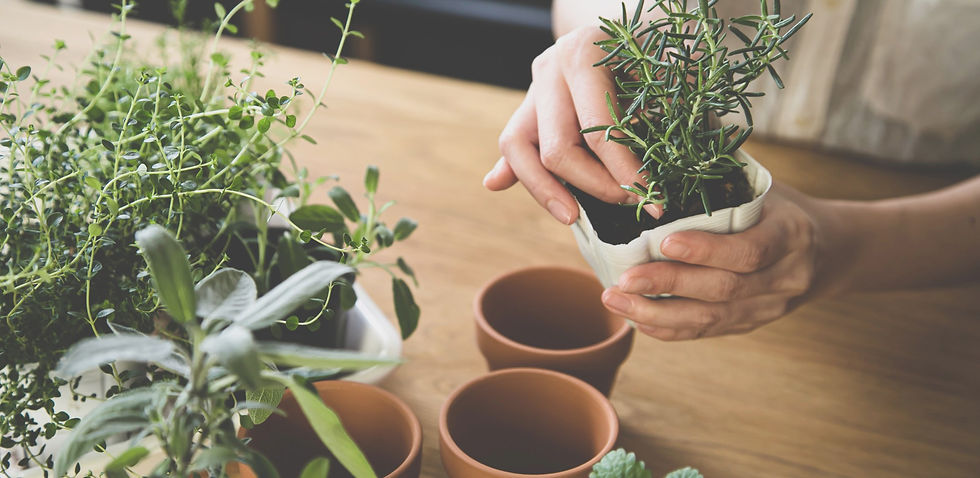Prolong the freshness of your herbs.
- Simona
- Oct 24, 2023
- 3 min read

Keep nurturing your gardens through the winter season with these 5 alternative methods, ensuring your herb garden remains vibrant and flourishing. Embrace the colder temperatures by adjusting your gardening strategy, allowing your green thumb to thrive year-round.
Chives, mint, oregano, parsley, sage, and thyme, known for their cold resilience, generally handle low temperatures better than herbs like rosemary. Nevertheless, by adhering to these five essential steps, any herb can endure and thrive in chilly conditions.
Shield your herbs from the cold by using cold frames or cloches:
These protective structures encase your herbs, trapping the heat rising from the ground and raising the temperature by several degrees, fostering herb growth.
What are cold frames and cloches? A cold frame resembles a house-shaped structure with sloping glass panels designed to capture maximum sunlight for the plants within. Cloches, on the other hand, are smaller and more portable. Traditionally made of glass and bell-shaped, they are now being crafted by DIY enthusiasts from cut-off milk jugs or soda bottles to enclose individual plants. If you opt for the DIY approach, ensure the edges are buried about an inch or two below the soil to prevent them from being blown away.
Insulate with a protective layer of mulch or straw:
Similar to a cozy blanket, a generous covering of mulch or straw enables your herbs to thrive throughout the cold season, particularly in regions with milder winters. When it's time to harvest, simply lift the mulch or straw cover, snip the herbs you require, and then replace the protective layer. Keep in mind that herb growth won't be as prolific as during the warmer months. If a light layer of snow settles on top of the mulch or straw, it acts as an additional insulating shield. When spring arrives, you can easily incorporate the mulch or straw into the soil with minimal waste.
Transplant your herbs in a warmer environment, such as a greenhouse or sun porch:
For those cultivating herbs directly in the ground, a popular method to maintain their vitality and productivity is to repot and relocate them to a warmer spot. Start by trimming them back to around an inch in height, making them more manageable for the move. You can utilize these trimmings, and if you have any extras, proceed to step 5. Carefully use a sharp shovel to separate them at their bases, ensuring that each one's roots are compatible with their new containers filled with well-draining planting mix. These transplanted herbs will rebound when returned to the garden in the spring.
Cultivate herbs on your sunlit windowsill:
Enhance your kitchen window with the vibrant greenery of herbs. Ensure they bask in a minimum of six hours of sunlight daily. If this requirement isn't met, you can supplement with artificial lighting, keeping in mind that it typically takes about 14 hours of artificial light to match the benefits of six hours of natural sunlight each day. Maintain your herb plants in an environment where the temperature fluctuates between 60 and 70 degrees Fahrenheit. Employ a well-draining potting mixture and water them regularly to promote healthy growth.
Prolong the vitality in a water-filled vessel:
Certain plants can thrive without the need for soil. By situating cuttings of basil, mint, sage, oregano, thyme, and green onions in a glass of water on your windowsill, they will initiate root development and sprout fresh leaves. This method provides a wonderful means to maximize your yield.
Remember to trim away lower leaves to prevent them from becoming submerged in the water.
Comentarii